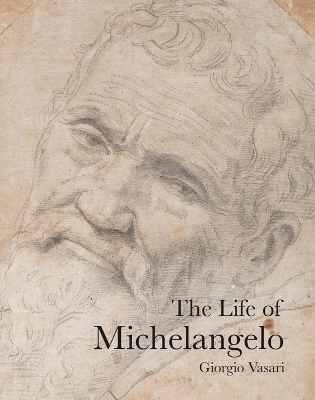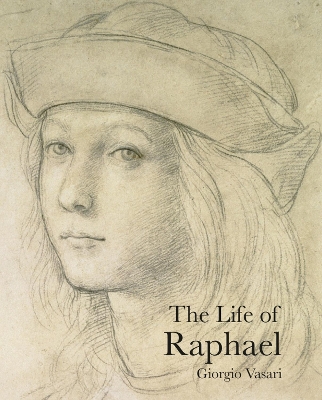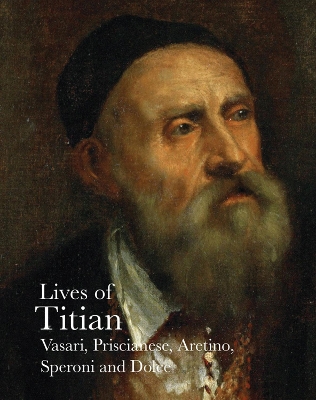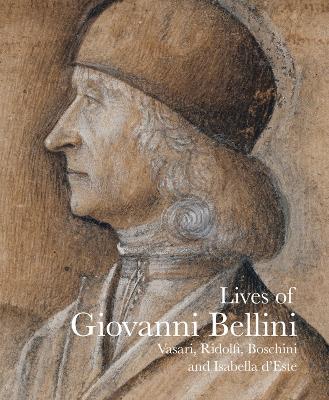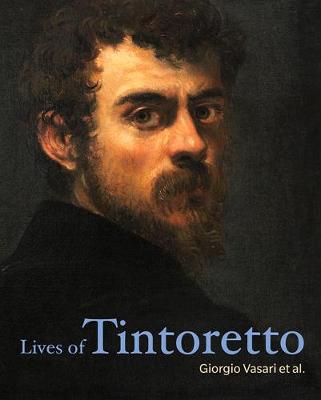Lives of the Artists
7 total works
Michelangelo Buonarrotti (1475-1564) is perhaps the greatest artist in the entire Western tradition. In painting, sculpture and architecture he created works that went beyond anything imagined before. The David - miraculously created, as Vasari describes, out of a piece of marble botched by another sculptor - the Sistine Ceiling, the Sistine Last Judgement, before which the Pope knelt in terrified prayer when it was first unveiled: these works have lost none of their awe-inspiring power. Michelangelo's impact was immediate, and he achieved a level of fame and influence that was unprecedented. It is not surprising, therefore, that the painter Giorgio Vasari should have made him the culmination of his Lives of the Painters, Sculptors and Architects, the first true work of art history. Vasari was a close colleague as well as a fellow artist and fellow Florentine. The biography printed here, from Vasari's much improved second edition, draws a picture of Michelangelo the man and the artist that has an immediacy and an authority that have not been surpassed. The introduction by David Hemsoll situates this great work in the context of 16th century Italian art.
Raphael (1483-1520) was for centuries considered the greatest artist who ever lived. Much of what we know about him comes from this biography, written by the Florentine painter Giorgio Vasari and first published in 1550. Vasari's Lives of the Painters was the first attempt to write a systematic history of Italian art. The Life of Raphael is a key text not only for the appreciation of Raphael's own art - whose development and chronology Vasari describes in detail, together with the spectacular social career of the first painter to be mooted, it was claimed, as a Cardinal - but also for its unprecedented attention to theoretical issues.
Lives of Titian
by Giorgio Vasari, Sperone Speroni, Pietro Aretino, Ludovico Dolce, Raffaele Borghini, and Francesco Prisicianese
Titian (c. 1488-1576) was recognised very early on as the leading painter of his generation in Venice. Starting in the studio of the aged Giovanni Bellini, Titian, with his contemporary Giorgione, almost immediately started to expand the range of what was possible in painting, converting Bellini's statuesque style into something far more impressionistic and romantic. This restless spirit of innovation and improvisation never left him, and during his long life he experimented with a number of different styles, the brushwork of his last great paintings showing a mysterious poetry that has never been equalled. This volume in the series Lives of the Artists collects the major writings about Titian by his contemporaries and near contemporaries. The centrepiece is the biography by Vasari, who as a Florentine found Titian's very Venetian sense of colour and transient forms a challenge to his concept of art as design. The poet Ariosto and sparkling letter writer Aretino had a more nuanced view of their friend's work, and Priscianese's account of a dinner party with Titian, and the contributions by Speroni and Dolce, and the slightly later Tuscan critic Borghini, round out the picture of this hugely thoughtful, intellectual artist, whose paintings remain some of the most sensual and affecting in all of Western art. Mostly unavailable in any form for many years, these writings have been newly edited for this edition. They are introduced by the scholar Carlo Corsato, who places each in its artistic and literary context. Approximately 50 pages of colour illustrations cover the full range of Titian's great oeuvre.
Lives of Leonardo da Vinci
by Charles Robertson, Giorgio Vasari, Matteo Bandello, and Sabba Da Castiglione
For many people the greatest artist, and the quintessential Renaissance man, Leonardo da Vinci (1452-1519) was a painter, architect, theatre designer, engineer, sculptor, anatomist, geometer, naturalist, poet and musician. His Last Supper in Milan has been called the greatest painting in Western art. Illegitimate, left-handed and homosexual, Leonardo never made a straightforward career. But from his earliest apprenticeship with the Florentine painter and sculptor Andrea Verrochio, his astonishing gifts were recognised. His life led him from Florence to militaristic Milan and back, to Rome and eventually to France, where he died in the arms of the King, Francis I. As one of the greatest exponents of painting of his time, Leonardo was celebrated by his fellow Florentine Vasari (who was nevertheless responsible for covering over the great fresco of the Battle of Anghiari with his own painting). Vasari's carefully researched life of Leonardo remains one of the main sources of our knowledge, and is printed here together with the three other early biographies, and the major account by his French editor Du Fresne. Personal reminiscences by the novelist Bandello, and humanist Saba di Castiglione, round out the picture, and for the first time the extremely revealing imagined dialogue between Leonardo and the Greek sculptor Phidias, by the painter and theorist Lomazzo, is published in English. An introduction by the scholar Charles Robertson places these writings and the career of Leonardo in context. Approximately 50 pages of colour illustrations, including the major paintings and many of the astonishing drawings, give a rich overview of Leonardo's work and mind.
Lives of Giovanni Bellini
by Giorgio Vasari, Carlo Ridolfi, Isabella, Marquise of Mantua D'Este, and Marco Boschini
Scion of an artistic dynasty, Giovanni Bellini is arguably the greatest Venetian painter of the early Renaissance. His astonishing naturalism revolutionised altarpiece painting and is still a source of wonder, as any visit to Frari in Venice will confirm. Most of what we know about this great artist comes from the earliest biographies by Vasari and Ridolfi printed here - the Ridolfi never before translated into English. A different and very personal insight is given by extensive correspondence with Bellini's great but neglected patron Isabella d'Este.
